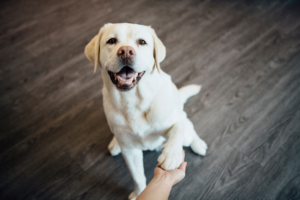Keeping Your Dog Safe Before, During, and After a Natural Disaster

Natural disasters can strike unexpectedly, leaving us feeling helpless and overwhelmed. As pet parents, one of our top priorities is ensuring the safety of our pets during these times. But just like us, our furry friends can be caught off guard and vulnerable during a disaster. The good news is, with some careful preparation, you can keep your dog safe and calm, whether it’s a hurricane, earthquake, wildfire, or any other emergency.
Keep reading to find out how you can prepare your dog before a disaster, how to keep them safe during it, and what to do afterward to make sure they’re cared for in the aftermath.
Before a Natural Disaster: How to Prepare Your Dog
Preparation is the key to ensuring your dog’s safety during an emergency. By planning ahead, you can minimize stress for both you and your pet when disaster strikes.
Create a Pet Emergency Kit
A pet emergency kit is a lifesaver in times of crisis. Pack everything you may need to care for your dog in an emergency. Here’s a checklist you can reference:
- A few days’ supply of food and some bottled water
- Any medications your dog needs, and a copy of the prescription
- Leash and harness
- First-aid supplies
- A favorite blanket or toy
- Feeding bowls for food and water
Update Your Dog’s Identification
If you’re separated from your dog during an evacuation or disaster, an update-to-date ID tag or microchip can help you reunite quickly. Ensure your dog is microchipped and that your contact information is correct in the registry. It is also a good idea for your dog to have a collar with an ID tag that includes your name, phone number, and address.
Plan for Evacuation
Before an evacuation is necessary, make a plan about where you’ll go with your dog. Research local pet-friendly shelters, hotels, or friends’ homes where you can safely stay with your dog. You should also have a transport plan in place with a carrier ready if your dog is small enough or ensure you have a leash to guide them in case you need to leave in a hurry. Practice getting your dog into a crate or on a leash quickly and calmly to minimize stress when it’s time to evacuate.
During a Natural Disaster: How to Keep Your Dog Calm and Safe
When disaster strikes, you can help reassure your dog and reduce their anxiety. Here’s what to do to keep them safe during the event:
Stay Calm and Reassure Your Dog
Dogs are incredibly intuitive and can sense your stress. Keeping calm will help your dog feel more secure. Talk to your dog in a calm, gentle voice to help ease their anxiety. Pet them or offer them their favorite blanket or toy to comfort them during the crisis.
Protect Your Dog During the Event
Depending on the type of disaster, you’ll need to keep your dog in a safe place. During a storm, earthquake, or flood, stay indoors with your dog and keep them away from windows and doors. Keep them on a leash or in a crate to prevent them from running off in a panic. During a wildfire, keep your dog indoors to avoid exposure to harmful smoke and hot conditions. Close all windows and doors to prevent smoke from entering and avoid walking your dog outside until air quality improves. If you must go outside, keep them on a leash and limit exposure. Have your emergency kit and your dog’s carrier ready in case you need to evacuate quickly.
After a Natural Disaster: How to Care for Your Dog
Once the immediate danger has passed, your dog may still need extra care and attention to recover from the stress of the event.
Inspect Your Yard for Dangers
Storms can leave behind a wake of unexpected hazards in your once-safe yard. Before venturing outside do a thorough investigation of your yard, looking for blown debris, loose fencing or gates and displaced wildlife.
Check for Injuries or Stress
After the disaster, assess your dog for injuries, especially if they’ve been outside or around debris. Be sure to check their paws, ears, and underbelly. Like humans, post-traumatic stress can also affect dogs so monitor their behavior for signs of anxiety, aggression, or depression. If your dog seems overly stressed or displays any concerning behavior, consult a vet for guidance.
Reintroduce Normal Routines
Dogs thrive on routine, so getting back to regular feeding, walking, and a play schedule as soon as possible will help them regain a sense of normalcy. Feed, walk, and play with your dog at the same time each day to help them adjust. Offer extra affection and attention if your dog is feeling nervous or disoriented after the event.
Evaluate Your Emergency Plan
Take the time to assess your emergency plan after the disaster and identify areas for improvement. Make sure everything in your pet emergency kit is in good condition and rotate the food to keep it fresh. If you had to make adjustments during the disaster, refine your plan for future emergencies.
At Dogtopia, we care about your dog’s well-being in all situations, and we encourage you to regularly review your emergency and evacuation plan so you’re always ready. Natural disasters are unpredictable, so having a plan in place and knowing what to do during and afterwards, can give your dog the best chance for safety and calm, no matter what.
This blog was reviewed/edited by Dogtopia’s Director of Health & Safety Lorraine Rhoads, an experienced animal biologist and environmental scientist.











